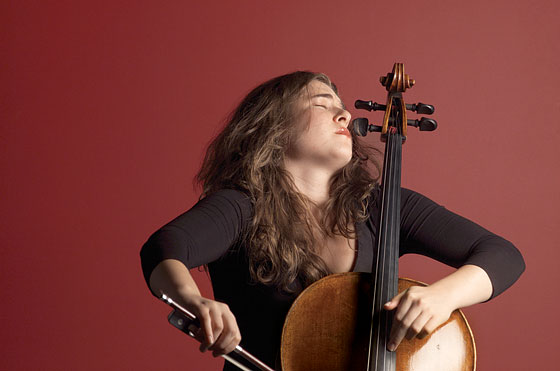
Like a painter intimating a composition in a single brushstroke, the cellist Alisa Weilerstein needed no more than a few measures of music to reveal the full depth of the evening ahead, her Zankel Hall recital debut. The run up a D-major chord at the beginning of Beethoven’s Cello Sonata, Op. 102, No. 2, could hardly be a simpler gesture, and Weilerstein kept it that way. She didn’t load it down with spurious expression or squeeze pathos out of the quick drop from loud to soft. But when she landed on that sweet high A, her bow glided on the string as if scudding across a series of tiny landscapes. She never produces a note that merely sits there, honking evenly to the end of its allotted time. Instead, the bow shifts speed, lightening or intensifying in minuscule gradations, sketching out a compact epic in a quick little A.
At 26, Weilerstein has surely discovered her limitations, but if so, she hasn’t shared them with the public. I’ve heard her play Osvaldo Golijov’s rapturous and improvisational Azul; Elgar’s flickering, half-lit concerto; and Penderecki’s bipolar Second Concerto. Her recital covered an enormous amount of terrain, from Beethoven and the midnight effusions of the Chopin Cello Sonata to a dark tango by Golijov to Kodály’s Sonata for Solo Cello, a lonely tour of the human soul. Golijov and Kodály both send the cellist out on her own, without the comfort of a piano by her side, and Weilerstein thrived in that exposed solitude. Kodály’s sonata is no inward meditation, but a work of public drama, thick with explosive dissonances, folk melodies, and spectacular athleticism. It opens with a pair of “listen to me” chords, which might sound hectoring or pompous but which Weilerstein delivered as a sudden thought, like an actor entering in mid-monologue. Over a half-hour, she traversed a Shakespearean soliloquy, careering from orchestral blasts of rage to quiet wit and the hushed ecstasy of stroked harmonics.
Whatever she plays sounds custom-composed for her, as if she has a natural affinity with everything. This is not the usual way in the classical-music world, where performers learn early to typecast themselves. Singers use the German word Fach (category) to describe the confluence of physicality, temperament, and training that makes them, say, Rossini soubrettes, or savage Straussian matriarchs. With far less logic, instrumentalists, too, tend to embrace particular chunks of repertoire or confining styles. They cast themselves as adoring specialists who keep massaging their relationships with a few composers; self-abnegating fundamentalists who consider the score infallible and performance a matter of correct execution; cautious scholars who derive each interpretive decision from rigorous analysis; or flamboyant iconoclasts who treat a piece of music as putty to be molded by their personalities. There are other stock characters of the concert stage, and I hope Weilerstein keeps clear of them all.
Until now, she has tiptoed into the big time, arriving with a backpack full of music new and old, a limitless technique, and a way with a brief and tender melody. She grew up as a chamber musician, performing in a trio with her violinist father and pianist mother, so she must have a visceral sense of what makes an ideal collaborator, and she hasn’t found that person yet. The young pianist Inon Barnatan, who joined her at Zankel Hall, is talented, but he didn’t match Weilerstein’s sense of momentum or her full expressive palette. At times, he seemed to be calculating the trajectory of a phrase so that piano and cello would reach its end together, or measuring the intensity of her fortissimo. His professionalism was impeccable, but it created an undesirable hierarchy. Weilerstein needs a pianist she can’t overwhelm.
Alisa Weilerstein
With Inon Barnatan. Zankel Hall.
December 9.
